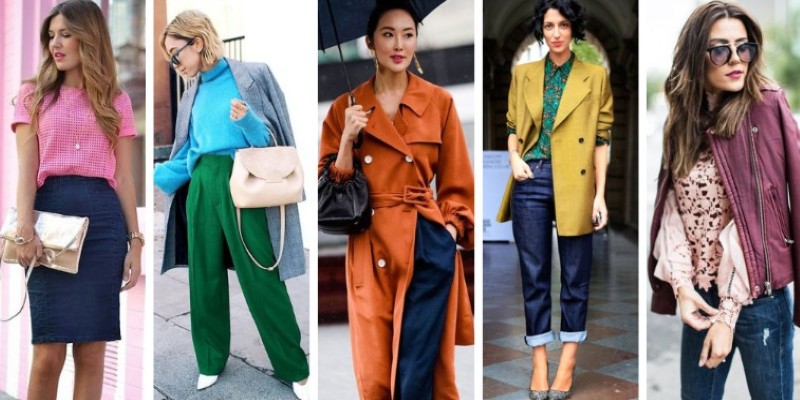How To Match Colors In Your Outfit Like A Pro
Ever find yourself standing in front of your wardrobe, staring at all the clothes but unsure how to put the perfect outfit together? The key to looking put-together isn't just about the clothes themselves—it's about knowing how to match colours in your outfit like a pro. Colour coordination can completely transform your look and ensure you exude confidence, style, and sophistication.
Here's how to make colour matching an effortless part of your dressing routine.
Understand The Basics Of Color Theory
To become a pro at matching colours, you first need to understand the fundamentals of colour theory. Simply put, this is how different colours work together. There are three basic colour schemes: complementary, analogous, and monochromatic. Let's break each down.
Complementary Colors
Complementary colours sit opposite each other on the colour wheel, such as blue and orange or red and green. These colours create contrast and make your outfit pop. However, use them carefully. You don't want to go overboard with clashing colours. If you're wearing a bold red dress, tone down the accessories or pair it with neutral shades.
Analogous Colors
Analogous colours, such as blue, green, and teal, are next to each other on the colour wheel. These colours blend well together and create a more harmonious look. If you're doubting what goes well together, reach for analogous colours—they'll always work in your favour. A good example would be pairing a soft pink top with a lavender scarf.
Monochromatic Colors

Monochromatic colour schemes use varying shades and tints of one colour. This is the simplest way to match colours, giving a sophisticated and cohesive look. You could wear shades of blue or even layer darker and lighter greens. The result is a chic, minimalist vibe.
Neutral Colors: Your Best Friend
When in doubt, rely on neutral colours. These shades can be paired with almost anything and are key to balancing out brighter or bolder colours in your outfit. The classic neutral tones are black, white, grey, beige, and navy.
For example, a white blouse can pair with almost anything: a red skirt for a pop of colour, black pants for a chic look, or even metallic shoes to add some sparkle.
Neutrals are not just safe options—they can also act as a foundation for experimenting with colour. Think of neutrals as your colour base, upon which you can layer other tones. If you want a bold look but feel nervous about clashing, neutral colours are the perfect anchor for your outfit.
Use The 60-30-10 Rule For Color Balancing.
One pro tip to keep things balanced is to apply the 60-30-10 rule. This rule helps you incorporate different colours into your outfit without overwhelming your look. Here's how it works:
60% of your outfit should be one dominant colour. Typically, this is your base colour, like a pair of pants or a dress.
30% should be your secondary colour, which adds depth and contrast. This could be a top, jacket, or accessories like scarves or shoes.
10% should be your accent colour—this is where you go bold. Think of it as the little pop of personality in your outfit, such as a bright handbag or a statement necklace.
Using this formula, you create a well-balanced and visually appealing outfit without feeling chaotic.
Colour And Fabric Combinations
Colour isn't just about the hue; fabric also plays a role in how the colour looks. For example, a rich velvet or satin fabric can make a deep jewel tone like emerald green or royal blue look even more luxurious. On the other hand, lighter fabrics like cotton or linen often work better with pastel shades, as they give a fresh, breezy feel.

Consider the texture of your clothes when choosing colour combinations. If you want a more elegant or formal look, pair a sleek silk dress in deep purple with gold accessories. A cotton shirt in a soft peach with denim jeans can have a warm, approachable vibe for a casual day look.
Play With Patterns
Patterns can seem tricky, but they're a fantastic way to add colour to your outfit without overthinking the matching process. Stripes, florals, polka dots, and animal prints can all be part of your wardrobe, and the secret to wearing them without clashing lies in understanding which colours appear within the pattern.
If your top is patterned, use a colour from the pattern for your bottoms or accessories. For example, a floral blouse with shades of pink and green can pair perfectly with green pants or a pink handbag. You can also break up busy patterns by mixing them with solids—this creates a balance between busy and calm, allowing the outfit to breathe.
Always stick to one colour palette when mixing patterns to avoid clashing colours. The most successful pattern mixes often feature one bold and one subtle piece—for example, a striped black-and-white shirt pair well with a floral skirt with a slight black-and-white pop.
Seasonal Color Matching
Colours change with the seasons, and matching colours to the season can enhance the overall feel of your outfit. Think light pastels, brights, and airy neutrals during the warmer months. Deep tones like burgundy, navy, and dark green are the go-to shades when it's colder.
However, this doesn't mean you should stop wearing bright colours in winter. You can incorporate them in small doses—like a pair of vibrant shoes or a colourful scarf—while keeping the rest of your outfit grounded in seasonal tones.
Confidence Is Key
Matching colours is a skill that takes time and practice, but above all, confidence is key. Don't be afraid to experiment and make mistakes along the way. The more you try, the more natural colour matching will become. Remember, fashion is about expressing your personality, and colour is one of the easiest ways.
So, next time you stand in front of your wardrobe, think about which colours speak to you, experiment with different combinations, and walk out the door feeling like a pro!





